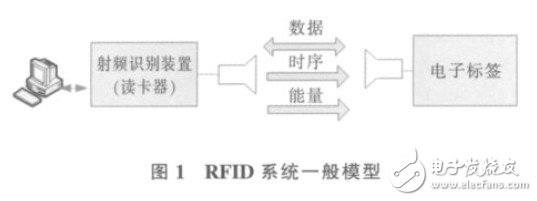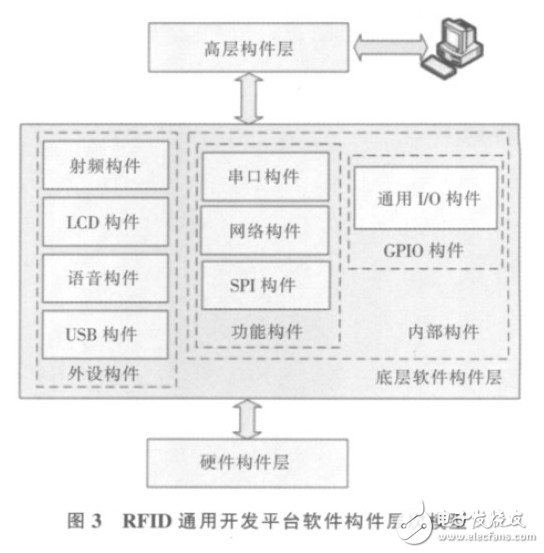Abstract: There are many kinds of RFID application systems, and there is a certain degree of reproducibility in the development work. By analyzing the general model of RFID system, the software and hardware model of RFID system general development platform based on component packaging design idea is proposed, using Freescale. The company's 32-bit ColdFire series microcontroller MCF52235 designed the RFID universal development platform, gave the software and hardware component design, and successfully carried out secondary development on this platform to realize the machine carding system on the student computer room. The practical results show that this componentized platform development method effectively improves the reusability and portability of hardware and software. The use of the RFID system universal development platform for various secondary application development shortens the development cycle.
Overview
Radio Frequency Identification (RFID, Radio Frequency IdenTIficaTIon) is a non-contact automatic identification technology that realizes non-contact data transmission by spatial coupling of radio frequency signals, and achieves the purpose of automatically identifying objects and obtaining related information. There are a large number of RFID application systems in the market for many fields. When developing these RFID systems, if each RFID system is viewed in isolation due to different application requirements and application environments, it will undoubtedly increase development costs and extend the development cycle. Therefore, based on the component-based package design, a general software and hardware platform for RFID system is designed to encapsulate software and hardware, improve the reusability and portability of hardware and software, and avoid duplication of work under the premise of ensuring system performance. , shorten the development cycle.
1 overall design
1.1 RFID Radio Frequency Identification System General Model
RFID radio frequency identification systems vary in their composition depending on the application, but by analyzing their commonalities, a general model can be built, as shown in Figure 1. The model is mainly composed of an electronic tag, a radio frequency identification device, a card reader, and a PC host. The space coupling between the electronic tag and the RFID device is achieved by the coupling element. In the coupled channel, energy transfer and data exchange are realized according to the timing relationship.

A common RFID system development platform means that the platform is based on the general model of RFID RFID system and provides hardware and software components for developing RFID RFID systems. The design concept must follow the principles of component design, secondary development and platform design.
1.2 RFID Universal Development Platform Hardware Component Model
In the general model, electronic tags can be divided into active tags and passive tags according to whether they are powered or not. According to the storage mode, they are divided into read-only tags and read-write tags. According to the working distance, the tags are separated into 1cm within the distance of the close-coupled tag. The near-coupled tag recognizes a distance of 10 cm and the adjacent tag recognizes a distance of 100 cm. Different electronic tag recognition technologies are different.
The general development platform in this paper is mainly for passive near-coupled RFID applications. It operates 13.56 MHz read/write tags (Type A cards) or read-only tags (Type B cards) according to the ISO/IEC 14443 protocol, and is equipped with various common interfaces and Peripherals such as general purpose I/O ports, networks, serial ports, SPI, USB, LCD, and voice to suit different applications. The hardware component model of the RFID universal development platform is shown in Figure 2. In a single-chip solution, the MCU usually contains a general-purpose I/O port and some built-in functional modules such as serial port and network. Therefore, the general I/O port, SPI, serial port, and network are relative to the core component MCU. MCU internal components, LCD, voice, USB, RF can be seen as its peripheral components.

1.3 RFID Universal Development Platform Software Component Model
The RFID Universal Development Platform software design is divided into two parts:
The underlying software component layer and the high-level component layer. The underlying software component layer is programmed for the hardware component, and is the package of the hardware driver. The high-level component layer calls the function function encapsulated by the underlying software component layer according to the actual application requirements of the user. The software component hierarchy model of the common platform is shown in Figure 3. The driver of the general-purpose I/O port is packaged as a GPIO component, and the driver of each built-in function module is packaged as a functional component, collectively referred to as an internal software component. The driver for the peripheral is packaged as a peripheral software component.

In principle, the development of various applications based on this platform only requires the design of PC-side application software, and the rest of the software and hardware components do not need to be modified. This is the idea of ​​component-based package design of the RFID universal development platform. The high-level component layer provides network commands for accessing each component. When the host computer operates the network, RF, LCD, USB, voice, etc., it only needs to send the corresponding network command.
Led Soccer Field Light,High Power Soccer Field Light,Led Stadium Light,Led Flood Fixture
Shenzhen Ri Yue Guang Hua Technology Co., Ltd. , https://www.ledlightinside.com